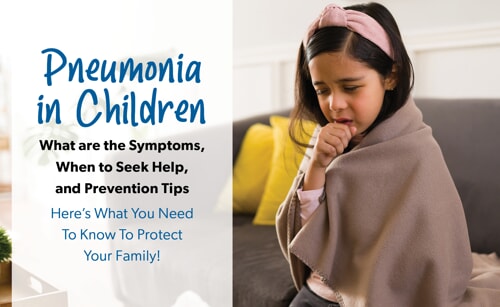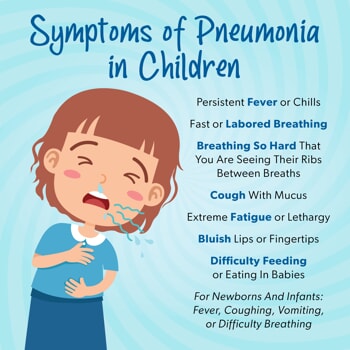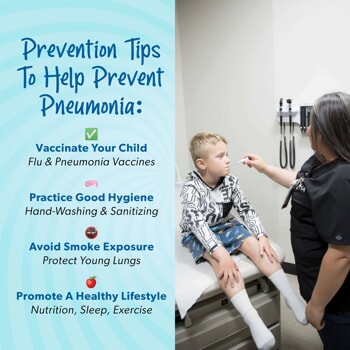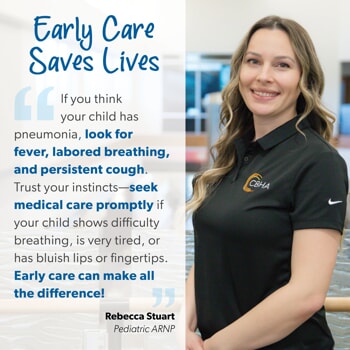Pneumonia in Children: Symptoms, When to Seek Help, and Prevention Tips

As pneumonia continues to circulate in our communities, it’s vital to recognize its symptoms, understand when to seek medical care, and take steps to prevent the infection. Pneumonia is a serious lung infection that can affect anyone but poses higher risks for children, especially those under two years old.
Recognizing Symptoms in Children
Pneumonia can present with a range of symptoms. Common signs include:
- Fever, sweating, and shaking chills
- Persistent cough, which may produce mucus or phlegm
- Fast or labored breathing, which may cause visible strain
- Fatigue or unusual tiredness
- Chest pain during breathing or coughing
- Nausea, vomiting, or diarrhea
- Bluish lips or fingertips, indicating low oxygen levels

In newborns and infants, symptoms can be less obvious. They may have:
- Difficulty feeding or breathing
- Fever or, conversely, a lower-than-normal body temperature
- Restlessness or lethargy
Children often cannot express their discomfort clearly, so observing their behavior closely is crucial.
When to See a Doctor
Prompt medical attention is essential when pneumonia is suspected, particularly for children. Seek immediate care if your child:
- Has difficulty breathing or breathes rapidly
- Shows bluish lips or fingertips
- Experiences persistent high fever (above 102°F/39°C)
- Has a cough producing green, yellow, or blood-streaked mucus
- Appears unusually drowsy or unresponsive

High-risk groups, such as children under two years old, those with weakened immune systems, or those with chronic health conditions, require urgent evaluation if pneumonia is suspected.
Prevention Tips
Prevention plays a key role in reducing the risk of pneumonia. Here’s what you can do:
Vaccinations
- Ensure children are vaccinated. Vaccines like the pneumococcal conjugate vaccine (PCV13) and flu shots are crucial. These vaccines are tailored for young children, especially those under five or in group childcare settings.
- Review vaccination schedules. Guidelines for pneumonia vaccines evolve, so check with your doctor to confirm your child is up to date.
Hygiene Practices
- Teach children the importance of handwashing with soap and water.
- Use alcohol-based hand sanitizers when soap isn’t available.
- Encourage children to avoid touching their face, especially their mouth and nose.
Lifestyle Habits
- Maintain a healthy diet with plenty of fruits, vegetables, and whole grains to boost immunity.
- Ensure adequate sleep and physical activity.
- Avoid exposure to tobacco smoke, which damages lung defenses.

Quick Tip from a Healthcare Expert
Rebecca Stuart, ARNP, emphasizes:
"If you think your child has pneumonia, look for signs like fever, fast or labored breathing, and persistent cough. Trust your instincts—seek medical care promptly if your child shows difficulty breathing, is very tired, or has bluish lips or fingertips. Early care can make all the difference!"
Final Thoughts
Pneumonia is a serious but often preventable illness. By recognizing symptoms early, seeking timely medical care, and taking preventive measures, you can help protect your child from this potentially dangerous infection. Don’t hesitate to reach out to your healthcare provider with any concerns.
